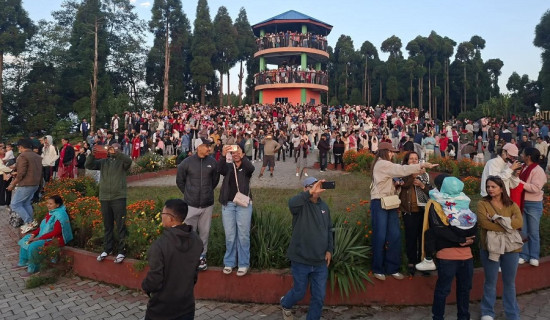- Thursday, 1 January 2026
Sickle Cell Treatment
Sickle cell anemia is a serious health crisis in Nepal, affecting especially the Tharu communities. This genetic disease distorts red blood cells into a sickle shape, obstructing blood flow and causing severe pain, organ damage, and premature deaths. Patients with sickle cell disease often face more than just physical pain. Many struggle with mental health issues such as anxiety, depression, and low self-confidence. These emotional challenges can make coping with their condition even harder. Despite these dire consequences, Nepal lacks a systematic plan for its prevention, early detection, and management. The recent announcement by the government to import sickle cell medicine from India is a positive step.
However, a one-time medicine import alone won’t be enough. Nepal urgently needs a comprehensive, community-based approach to address this debilitating disease. In developed countries, national programmes for sickle cell management emphasise early diagnosis, routine screening, and accessible care. However, these high-resource models are often impractical for resource-crunched countries like Nepal. Rural communities lack infrastructure, funding, and trained healthcare workers. In our country, early diagnosis and monitoring are rare, with many cases only identified once patients are in acute crisis. This “crisis-based” model of healthcare is unsustainable, ineffective, and unjust for the communities most affected.
A practical solution begins with establishing sickle cell centres in high-prevalence areas. These centres should provide routine screening, genetic counselling, and community education. Affected families need clear and accessible information on how to manage the disease. These centres would serve as lifelines for patients and as hubs of information for medical professionals and the community. Education is critical, yet awareness of sickle cell disease remains very low. Many affected families are unaware of the causes and management of the disease and increasing stigma. This gap in understanding is worsened by the lack of public health education campaigns on genetic diseases. An effective programme should actively inform communities about preventive measures, risks, and treatment options. Health campaigns should encourage genetic screening for at-risk couples.
Though it raises ethical questions, genetic counselling could help reduce the transmission of sickle cell anaemia to future generations. Awareness can empower families to make informed health decisions and reduce the social stigma that often isolates sickle cell patients. Primary healthcare providers will be the backbone of any effective strategy, yet most have little or no training in sickle cell care. Primary care is Nepal’s most accessible healthcare, especially in rural areas, so its capacity to manage chronic diseases like sickle cell anaemia must be strengthened. Training primary healthcare workers in early diagnosis, pain management, and basic nutritional counselling would make a profound difference.
However, care cannot stop at the primary level. Referral systems to specialised centres need to be streamlined to ensure patients can access higher-level care when necessary. Research and data collection are essential for effective policy-making. Nepal currently lacks reliable data on the prevalence and impact of sickle cell anaemia. Understanding regional patterns of the disease is crucial to creating a targeted, efficient response. International partnerships and research initiatives could aid in the development of locally suitable treatment models and surveillance systems.
















